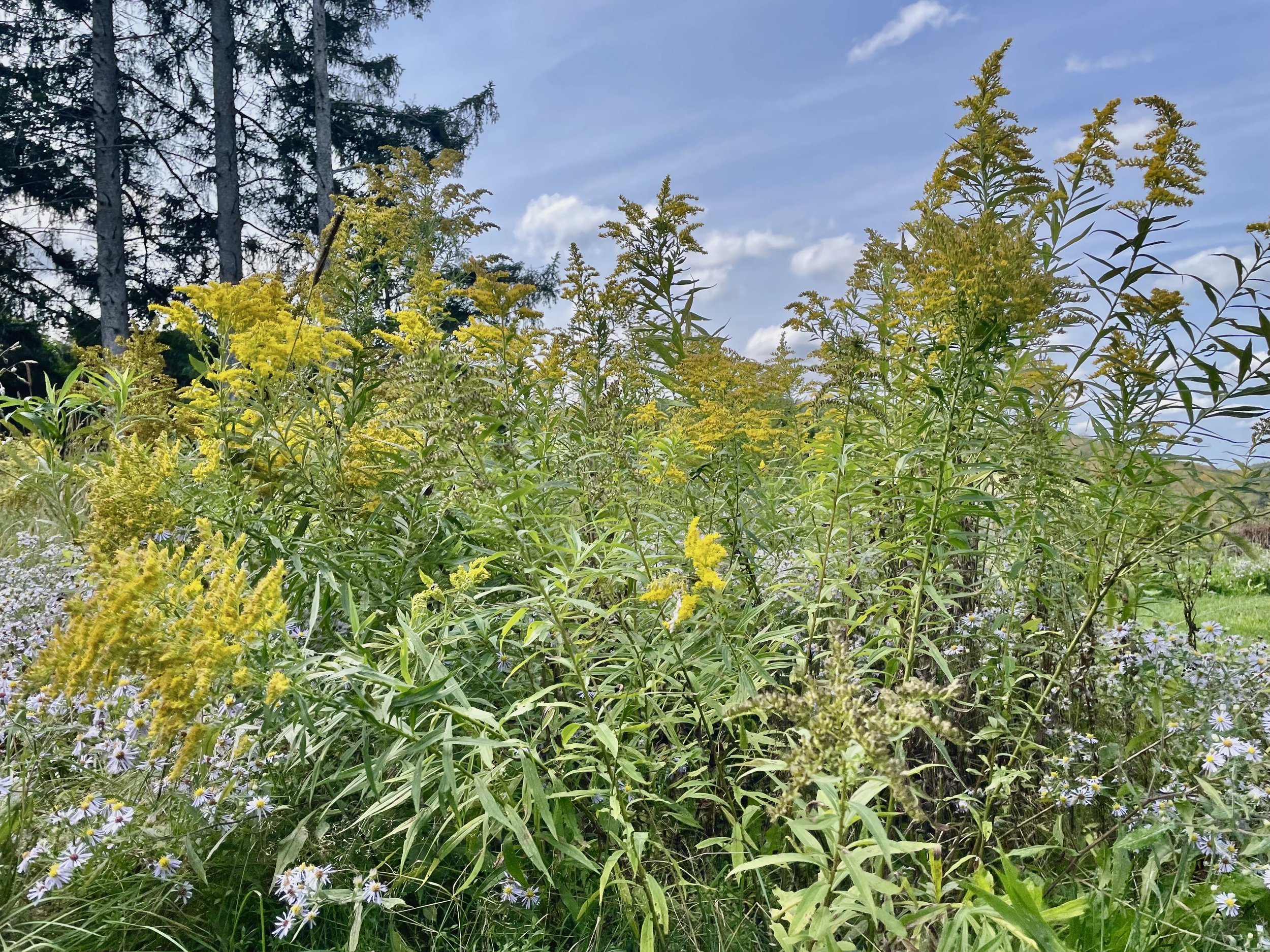
The land's history of dairy cow grazing has shaped the soil and ecosystem, laying the groundwork for regenerative practices. Transforming it into an artist's garden marks a shift from traditional agriculture to sustainable, biodiversity-focused cultivation.
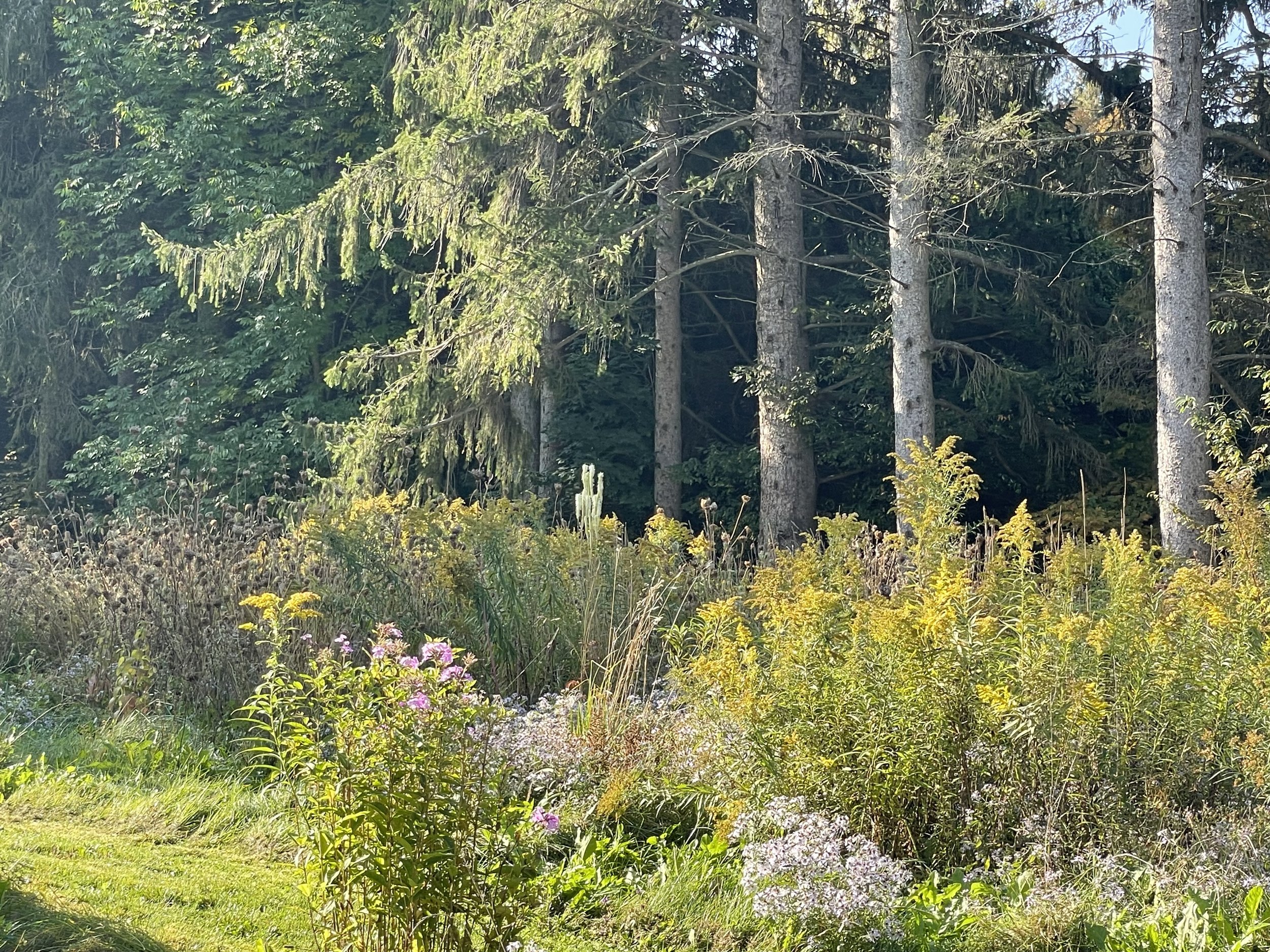
Goldenrod provides a rich yellow pigment, while Blue Aster offers soft blue-purple tones, creating diverse artistic possibilities. Ecologically, their staggered blooms support pollinators and enhance biodiversity. Thriving in the sun and well-drained soils create a resilient, self-sustaining garden. Goldenrod improves soil health, and both attract beneficial insects for natural pest control, reflecting the Artist's Garden philosophy of merging art, nature, and environmental stewardship.

Discovery of Natural Growth: The project's initial phase involved observing and discovering the naturally thriving plants. By allowing the land to regenerate on its own, a variety of native species were identified, and encouraged- forming the basis of the garden's ecosystem. Understanding what would naturally grow in the environment was the foundational goal for building a sustainable and symbiotic garden.
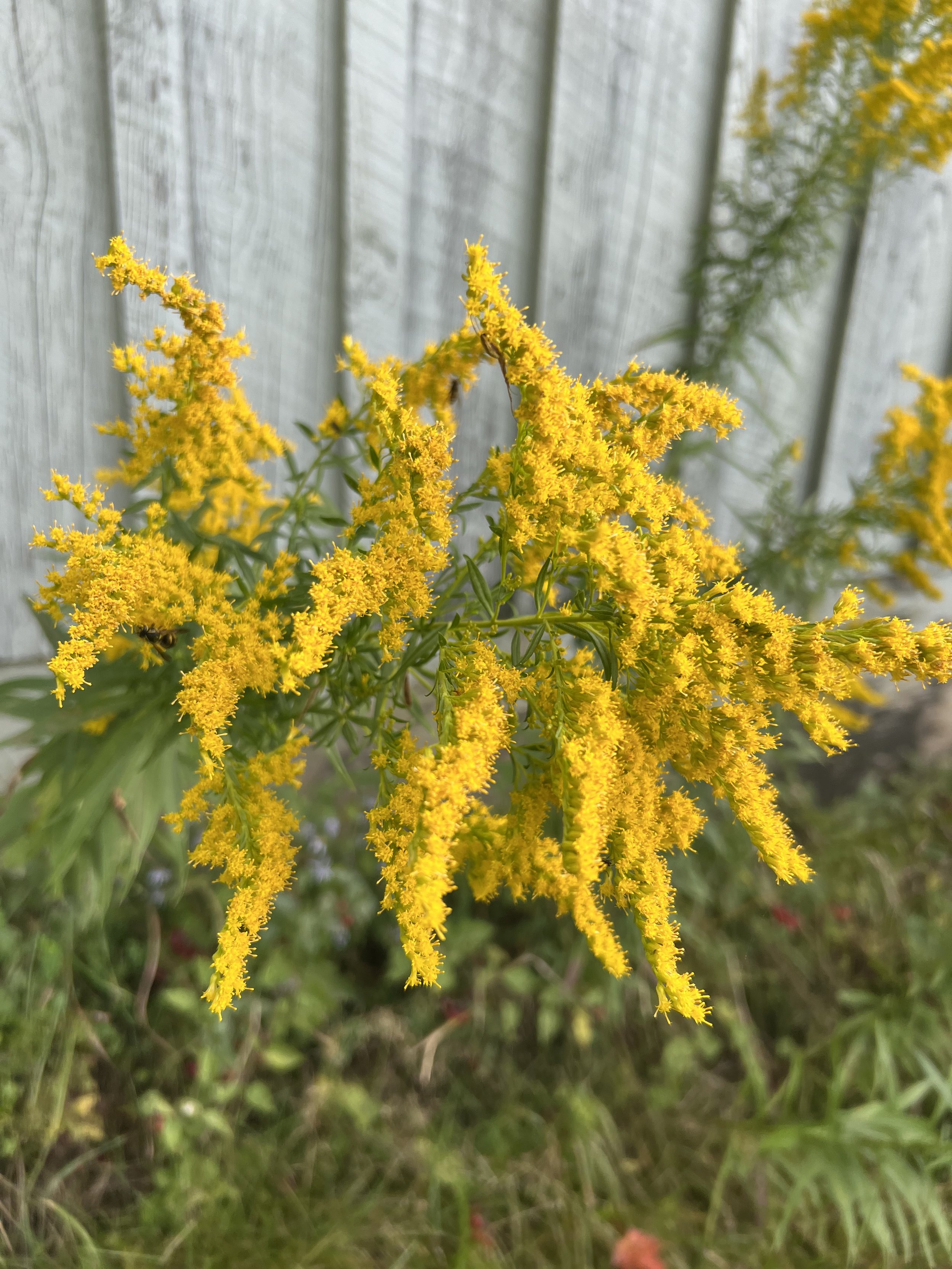
The regenerative cultivation spanned full seasons, aligning the garden's development with the Western Catskills' climate and conditions, ensuring practical sustainability.
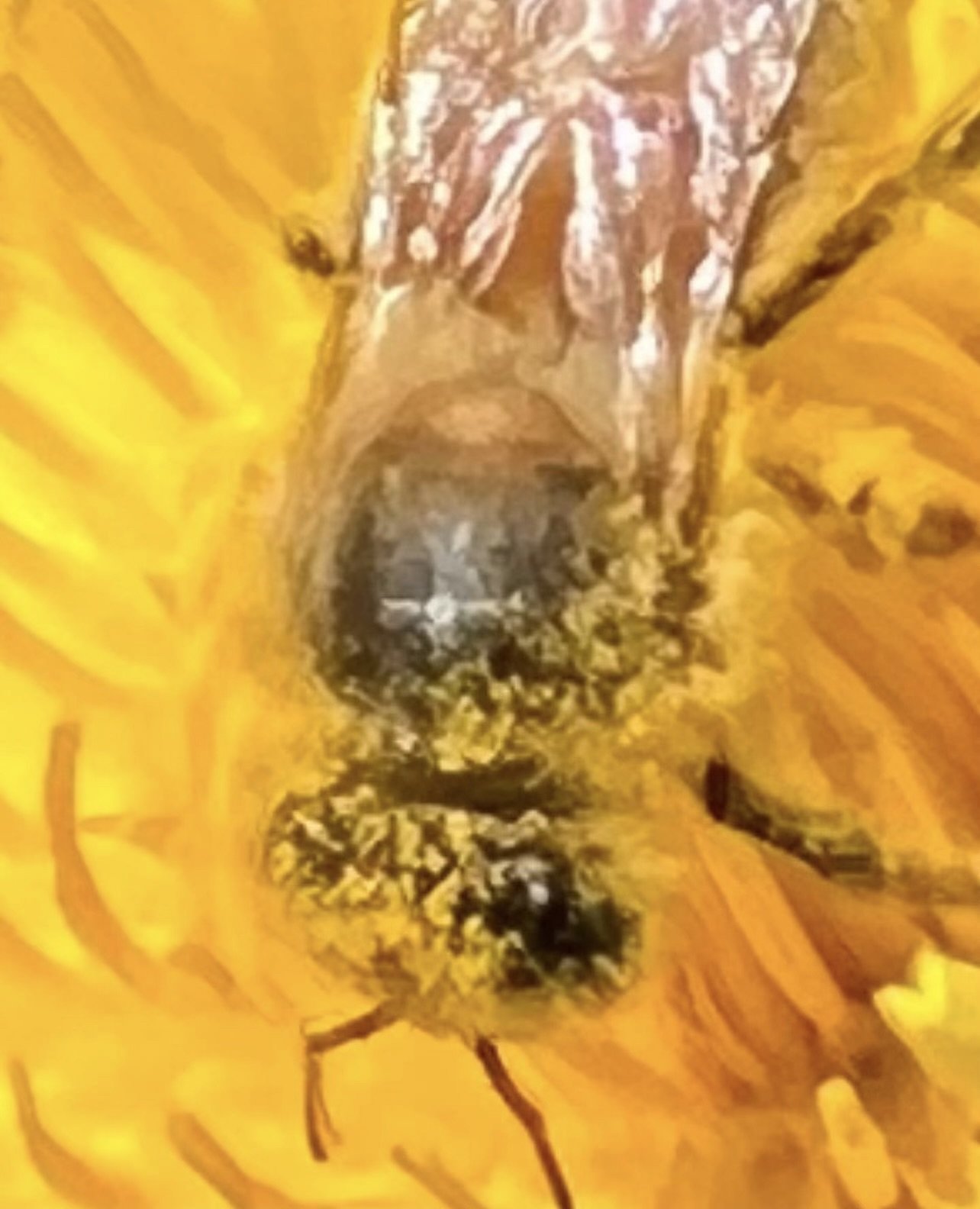
An aviary was introduced to boost pollination and support garden sustainability by fostering bees, which enhance plant growth and maintain local ecological balance.

Each location has unique qualities that influence its potential for ecological projects.

Previously used for dairy grazing and feed crops, the land now makes artists' stains in a regenerative approach. Native plants like Dandelions, Aster, and Goldenrod were researched, Cultivated, and replanted. A small aviary was added to promote ecological balance.
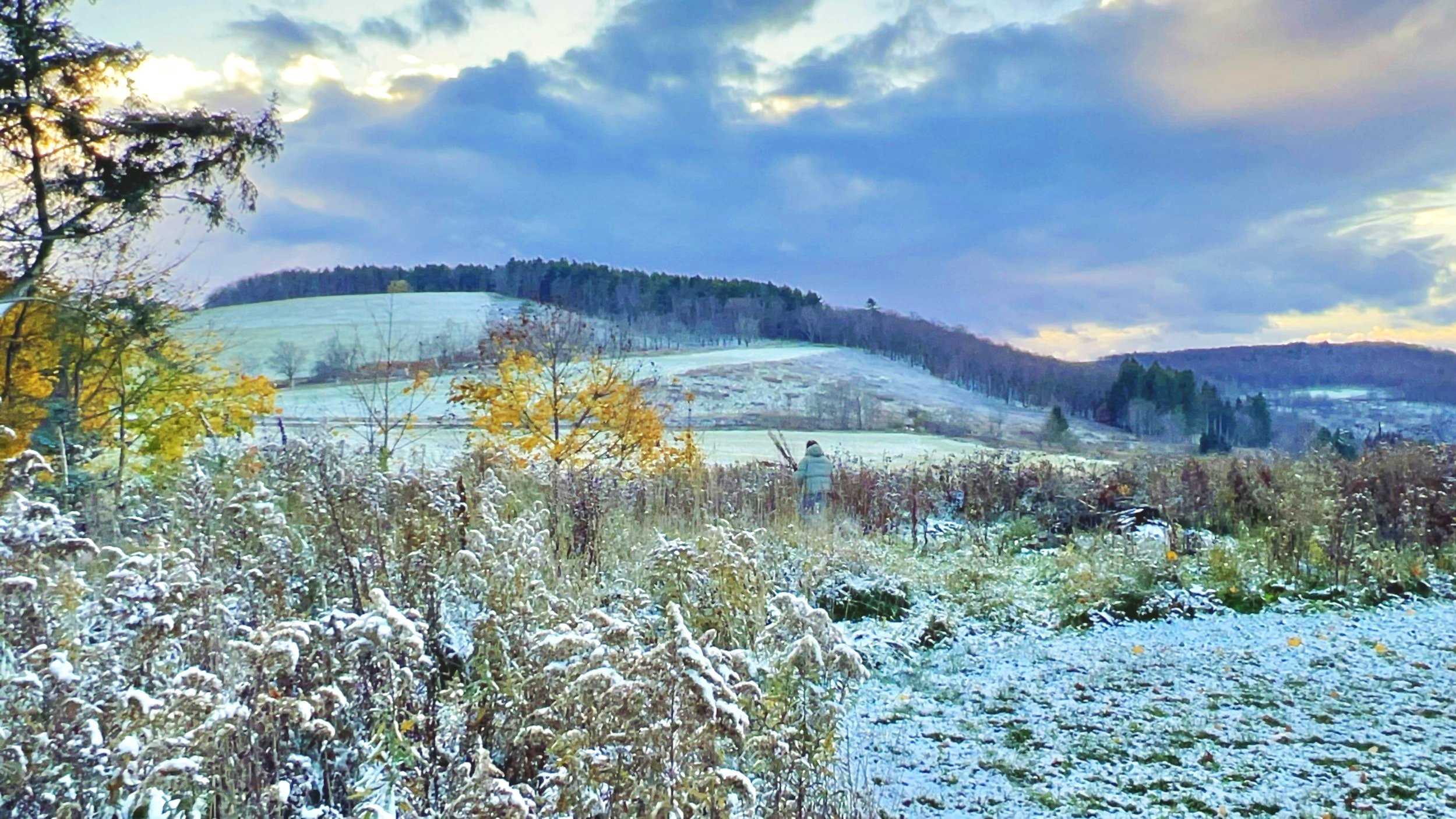
The Artist's Garden adapts to each season, focusing on growth in spring and summer, harvesting pigments in fall, and regenerating soil in winter. This year-round approach aligns with nature's rhythms, engaging students and experts in sustainable pigment production.








The land's history of dairy cow grazing has shaped the soil and ecosystem, laying the groundwork for regenerative practices. Transforming it into an artist's garden marks a shift from traditional agriculture to sustainable, biodiversity-focused cultivation.
Goldenrod provides a rich yellow pigment, while Blue Aster offers soft blue-purple tones, creating diverse artistic possibilities. Ecologically, their staggered blooms support pollinators and enhance biodiversity. Thriving in the sun and well-drained soils create a resilient, self-sustaining garden. Goldenrod improves soil health, and both attract beneficial insects for natural pest control, reflecting the Artist's Garden philosophy of merging art, nature, and environmental stewardship.
Discovery of Natural Growth: The project's initial phase involved observing and discovering the naturally thriving plants. By allowing the land to regenerate on its own, a variety of native species were identified, and encouraged- forming the basis of the garden's ecosystem. Understanding what would naturally grow in the environment was the foundational goal for building a sustainable and symbiotic garden.
The regenerative cultivation spanned full seasons, aligning the garden's development with the Western Catskills' climate and conditions, ensuring practical sustainability.
An aviary was introduced to boost pollination and support garden sustainability by fostering bees, which enhance plant growth and maintain local ecological balance.
Each location has unique qualities that influence its potential for ecological projects.
Previously used for dairy grazing and feed crops, the land now makes artists' stains in a regenerative approach. Native plants like Dandelions, Aster, and Goldenrod were researched, Cultivated, and replanted. A small aviary was added to promote ecological balance.
The Artist's Garden adapts to each season, focusing on growth in spring and summer, harvesting pigments in fall, and regenerating soil in winter. This year-round approach aligns with nature's rhythms, engaging students and experts in sustainable pigment production.